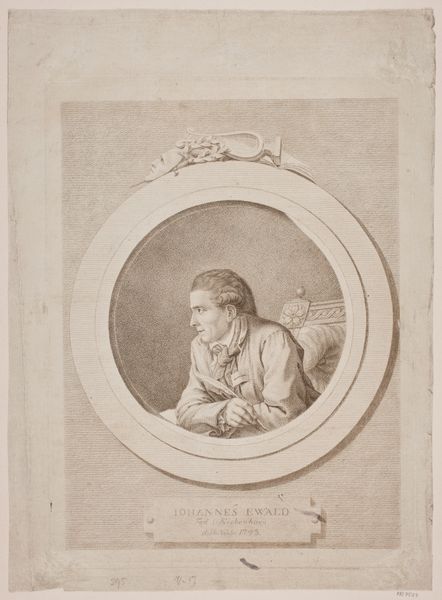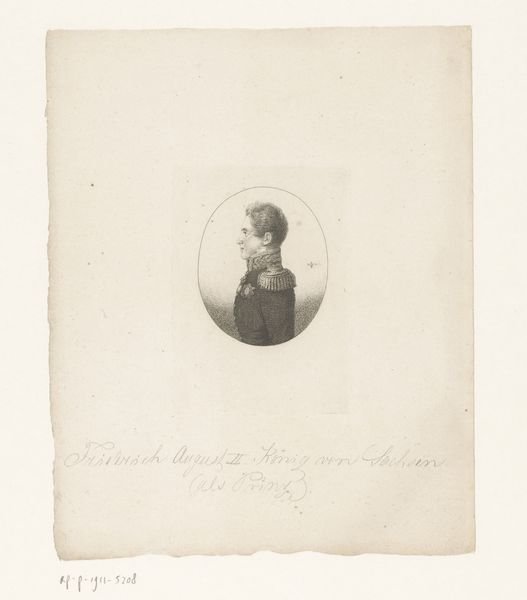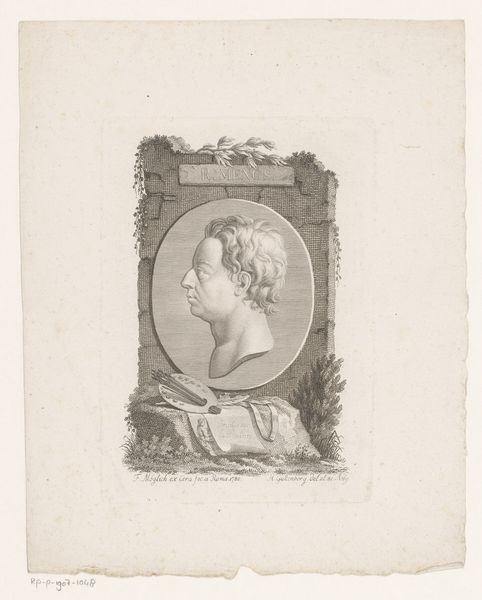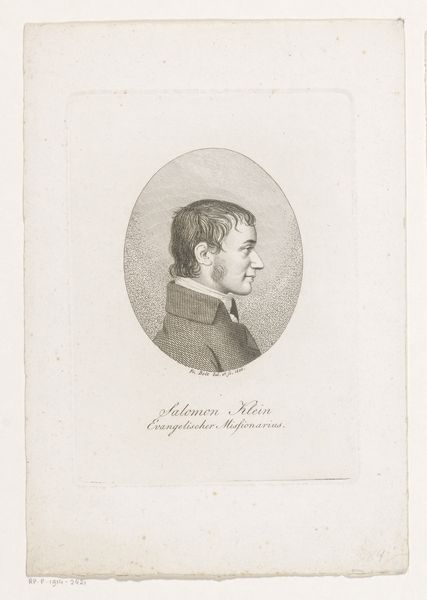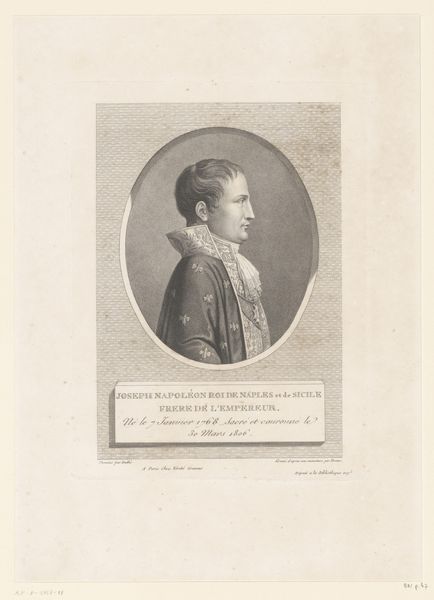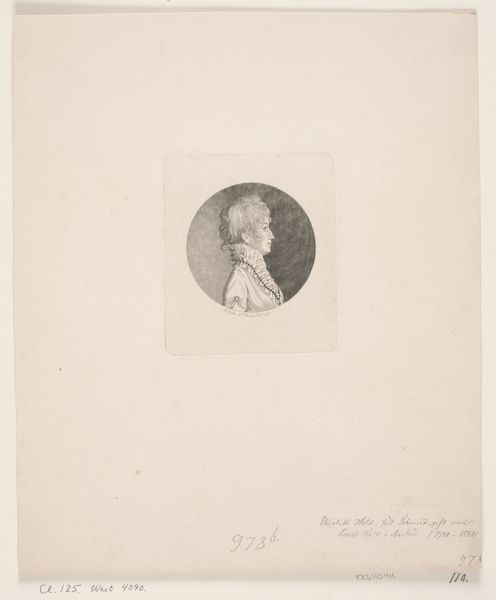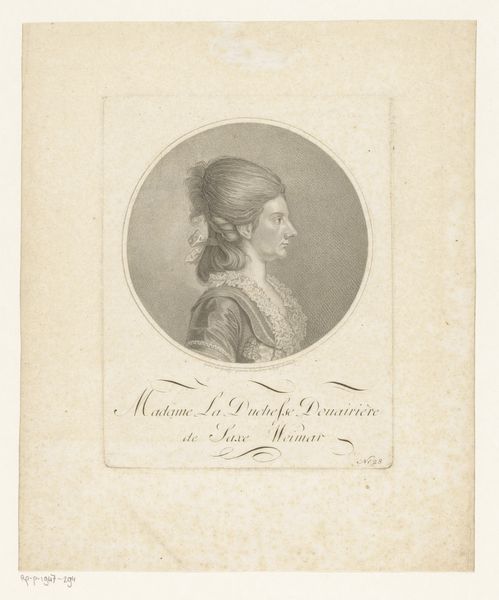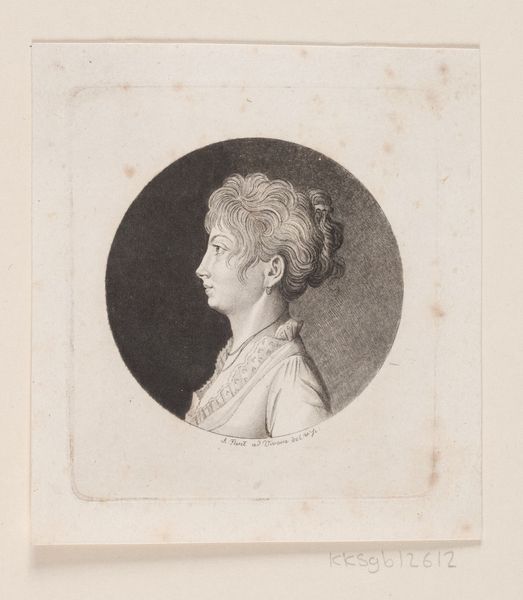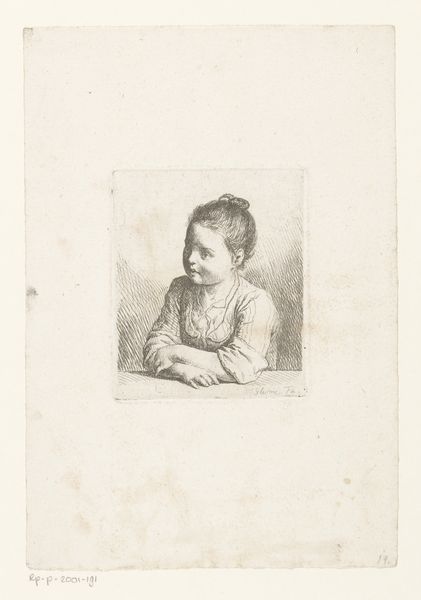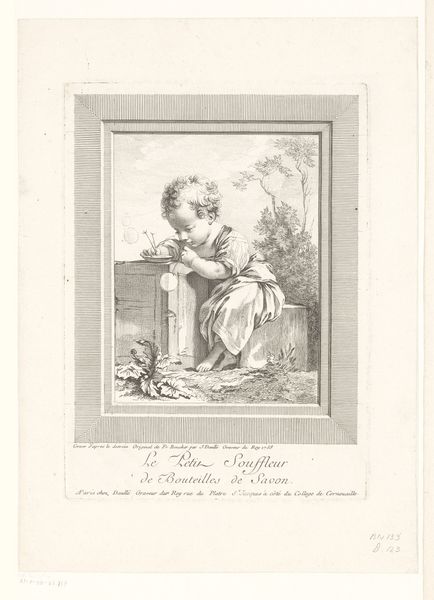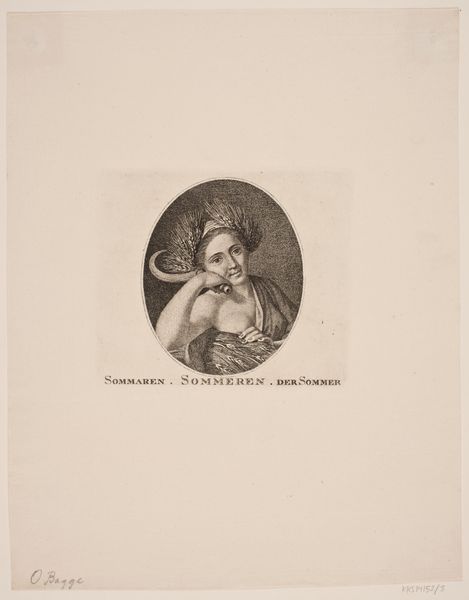
Dimensions: height 250 mm, width 173 mm
Copyright: Rijks Museum: Open Domain
Curator: Here we have "Meisje," created around 1771 by Jean-Baptiste Lucien, held within the Rijksmuseum collection. It employs etching and engraving on paper, a subtle mix that draws you in. Editor: My first impression is…wistful. The soft, sepia tones lend it a delicate, melancholic air. And that oval frame further isolates the subject. Curator: Indeed, the Rococo stylistic elements are palpable here, from the decorative flourish in the framing to the soft lines detailing the subject. It reminds us of the period's emphasis on elegance. But what does this imply culturally? Editor: Well, consider the societal roles of children in that era. Children of wealthier classes were frequently portrayed in art to signify wealth and family status. But this seems to offer something different; the look she is giving us, isn't as staged as one would expect from that period. Curator: Quite right. I think the artist’s control of light is paramount here. The shadowing across her face adds considerable depth and complexity to her expression. Editor: And think of the context—engravings and etchings often functioned as replicable images accessible to a broader public than original paintings. This image could have circulated quite widely. Was she maybe meant to stand as a certain social commentary piece or just to be an idea of ideal beauty? Curator: The semiotic structure is complex here. The circle isolates, focusing our gaze, while her tilted gaze disrupts direct engagement, suggesting innocence maybe tinged with introspection. She looks like she’s contemplating. Editor: I do see a certain sense of isolation, despite her placement within that constructed "window." It's more like she is trapped behind a window looking at a grim world from afar. Almost an allegory for the struggles women face in a man's world perhaps? Curator: Intriguing reading, it makes you look twice at the work. Her tilted head breaks up any expected symmetry which then creates that tension. Editor: Exactly, it prevents us from easily categorizing her and opens many avenues of possibilities regarding the portrait’s intent and subject’s position in life. Curator: Indeed, these techniques converge to form an engaging study of structure, emotion, and, of course, the history embedded within. Editor: Looking closer allows us to unravel how the role of imagery continues to shift throughout the ages.
Comments
No comments
Be the first to comment and join the conversation on the ultimate creative platform.
